Isfahan: Iran’s Hidden Jewel
Once the dazzling capital of ancient Persia,Isfahan fell victim to neglect, but a new generation hopes to restore its lost luster
/https://tf-cmsv2-smithsonianmag-media.s3.amazonaws.com/filer/Bridge-of-33-Arches-Isfahan-631.jpg)
The courtyard is coated in a fine brown dust, the surrounding walls are crumbling and the flaking plaster is the same monotonous khaki color as the ground. This decrepit house in a decaying maze of narrow alleys in Isfahan, Iran, betrays little of the old capital's glory days in the 17th century. Suddenly, a paint-splattered worker picking at a nearby wall shouts, waves his steel trowel and points. Underneath a coarse layer of straw and mud, a faded but distinct array of blue, green and yellow abstract patterns emerges—a hint of the dazzling shapes and colors that once made this courtyard dance in the shimmering sun.
I crowd up to the wall with Hamid Mazaheri and Mehrdad Moslemzadeh, the two Iranian artist-entrepreneurs who are restoring this private residence to its former splendor. When these mosaics were still vibrant, Isfahan was larger than London, more cosmopolitan than Paris, and grander, by some accounts, than even storied Istanbul. Elegant bridges crossed its modest river, lavishly outfitted polo players dashed across the world's largest square and hundreds of domes and minarets punctuated the skyline. Europeans, Turks, Indians and Chinese flocked to the glittering Persian court, the center of a vast empire stretching from the Euphrates River in what is today Iraq to the Oxus River in Afghanistan. In the 17th century, the city's wealth and grandeur inspired the rhyming proverb, Isfahan nesf-e jahan, or "Isfahan is half the world."
After a brutal siege shattered that golden age in the early 18th century, new rulers eventually moved the capital to Tehran, leaving Isfahan to languish as a provincial backwater, which not incidentally left many of the old city's monuments intact. "One could explore for months without coming to an end of them," marveled British traveler Robert Byron on his 1933-34 journey across Asia. That artistry, he wrote in The Road to Oxiana, "ranks Isfahan among those rarer places, like Athens or Rome, which are the common refreshment of humanity."
Today, however, the city is mainly known abroad as the site of Iran's premier nuclear research facility. What once was a sleepy town has emerged as the country's third largest metropolis, surrounded by expanding suburbs, belching factories and the choking traffic of more than three million people. Nothing symbolizes Iran's disconcerting modernity more than its launch, in February, of a satellite named Omid (Hope). In Isfahan, however, hope is a commodity in sharp decline. The elegant urban landscape that survived invasions by Afghan tribesmen and Mongol raiders is now threatened by negligence and reckless urban development.
Mazaheri and Moslemzadeh are members of a new generation of Isfahanis who want to restore not just buildings but their city's reputation as a Persian Florence, one they hope will one day enthrall Westerners with its wonders once again. Inside the cool and dark interior of the house that is their current focus, the freshly painted white stucco ceiling bristles with scalloped stalactites. Delicate gilded roses frame wall paintings of idyllic gardens. (Paradise is a Persian word meaning "walled garden.") Above a central fireplace, hundreds of inset mirrors reflect light from the courtyard. "I love this profession," says Safouva Saljoughi, a young, chador-clad art student who is dabbing at a faded painting of flowers in one corner of the room. "I have a special relationship with these places."
The house may have been built in the 17th century by a wealthy merchant or prosperous government official, then remodeled to suit changing tastes over the next two centuries. Even the fireplace damper is shaped in the delicate figure of a peacock. "Ornament and function together," says Mazaheri in halting English. Located just a short walk from the medieval Friday Mosque, the house is of classic Iranian design—a central courtyard surrounded by rooms on two sides, a single entrance on the third and a grand two-story reception room with large windows on the fourth.
Rocket attacks during the war with Saddam Hussein's Iraq in the early 1980s emptied this old neighborhood, and the house was badly vandalized. As Moslemzadeh guides Saljoughi's careful restoration effort, Mazaheri nods toward gaping holes in the reception room, which once held oak-framed stained glass that bathed the interior in a rainbow of vivid colors. "There are still a few masters left in Isfahan who can rebuild such windows," he says. Just repairing the elaborate stucco ceiling took five professionals on scaffolding more than a year.
Trained as a specialist in conservation techniques, the lean and energetic Mazaheri, 38, says he has built a restoration business that tackles anything from old ruins to 17th-century wall paintings. Together with his colleague Moslemzadeh, who is 43 and studied art conservation in St. Petersburg, Russia, they are investing their time and profits to convert this wreck of a home into a teahouse where visitors can appreciate traditional Isfahani crafts, music and art. Like many Isfahanis I meet, they are welcoming to foreigners, refreshingly open and immensely proud of their heritage. Without a trace of irony or discouragement, Mazaheri looks around the half-finished reception room and says, "It may take five more years to finish fixing this place up."
Isfahan's history is an epic cycle of fabulous boom and calamitous bust. Here a road traveling across the Iranian plateau east to the Mesopotamian plain meets a path connecting the Caspian Sea to the north with the Persian Gulf to the south. That geography linked the city's fate to the merchants, pilgrims and armies who passed through. Blessed with a pleasant climate—the city lies at nearly the same altitude as Denver and has relatively mild summers—Isfahan evolved into a bustling township at ancient Persia's crossroads.
A taxi driver, thumbing intently through his Persian-English dictionary as he swerves through dense traffic, offers to sell me a gold statue he claims is 5,000 years old. I would be surprised if it were authentic—not least because such ancient artifacts remain elusive, making it difficult to pinpoint the precise era when Isfahan emerged as an urban center. What little has been found of the city's distant past I see in the basement of the cultural heritage office, an immaculately restored 19th-century villa just down the street from Mazaheri and Moslemzadeh's project. A few boxes of stone tools sit on a tile floor, and a couple of dozen pieces of pottery—one incised with a writhing snake—lie on a plastic table. A few miles outside town, on top of an imposing hill, sit the unexcavated ruins of a temple, which may have been built during the Sassanian Empire that dominated the region until the Arab conquest in the 7th century A.D. Within the city itself, Italian archaeologists digging below the Friday Mosque just before the 1979 Islamic Revolution found Sassanian-style columns, hinting that the site originally might have been a Zoroastrian fire temple.
The city's first recorded golden age is traced to the arrival of the Seljuk Turks from Central Asia in the 11th century. They turned the town into their capital and built a magnificent square leading to an enlarged Friday Mosque festooned with two domes. Though the mosque's southern dome—facing Mecca—is larger and grander, it is the northern dome that has awed pilgrims for a thousand years. Peering up toward the apex 65 feet above the pavement, I feel a pleasant and unexpected vertigo, the perfect balance of harmony in motion. "Each element, like the muscles of a trained athlete, performs its function with winged precision," wrote Robert Byron.
Unlike St. Peter's Basilica in Rome or St. Paul's Cathedral in London, there are no concealed chains holding either dome in place; the architects relied only on their mathematical and engineering abilities. A meticulous analysis of the north dome in the 1990s found it to be unusually precise, not just for the 11th century, but even by today's standards. Known as Gunbad i-Khaki (the dome of earth), this graceful structure may have been influenced or even designed by one of Persia's most famous poets, Omar Khayyám, who was invited to Isfahan in 1073 to take charge of the sultan's observatory. Though remembered primarily for his verse, Khayyám was also a brilliant scientist who wrote a seminal book on algebra, reformed the calendar and is said to have demonstrated that the sun was the center of the solar system 500 years before Copernicus.
Alpay Ozdural, a Turkish architect who taught at Eastern Mediterranean University until his death in 2005, believed that Khayyám played a key role in the dome's alignment and construction in 1088-89, creating what amounts to a mathematical song in brick. (Although many scholars are skeptical about this theory, Ozdural claimed that a tantalizing clue could be found in a verse of Khayyám's poetry: "My beauty's rare, my body fair to see, tall as a cypress, blooming like the tulip; And yet I don't know why the hand of Fate sent me to grace this pleasure-dome of Earth.") Just three years after the completion of the dome, the sultan died, the observatory closed, the reformed calendar was abolished and Khayyám—who had little patience with Islamic orthodoxy—later left Isfahan for good.
More than a century later, in 1228, Mongol troops arrived, sparing the architecture but putting many inhabitants to the sword. The city fell into decay and fighting erupted between rival Sunni sects. "Isfahan is one of the largest and fairest of cities," wrote Arab traveler Ibn Battuta when he passed through in 1330. "But most of it now is in ruins." Two generations later, in 1387, the Central Asian conqueror Tamerlane avenged a revolt in Isfahan by massacring 70,000 people. Buildings were again left untouched, but Tamerlane's men added their own macabre monument in the form of a tower of skulls.
It would be another two centuries before Isfahan would rise again, under the reign of Shah Abbas I, the greatest ruler of the Safavid Empire (1501-1722 A.D.). Cruel as Russia's Ivan the Terrible, canny as England's Elizabeth I and extravagant as Philip II of Spain (all contemporaries), Abbas made Isfahan his showplace. He transformed the provincial city into a global metropolis, importing Armenian merchants and artisans and welcoming Catholic monks and Protestant traders. He was generally tolerant of the Jewish and Zoroastrian communities that had lived there for centuries. Most remarkably, Abbas sought to establish Isfahan as the political capital of the first Shiite empire, bringing learned theologians from Lebanon to bolster the city's religious institutions—a move begun by his predecessors that would have profound consequences for world history. The arts thrived in the new capital; miniaturists, carpet weavers, jewelers and potters turned out ornate wares that enhanced the mansions and palaces that sprang up along spacious avenues.
Abbas was a man of extremes. A European visitor described him as a ruler whose mood could quickly turn from jolly to "that of a raging lion." Abbas's appetites were legendary: he boasted an enormous wine cellar and a harem that included hundreds of women and more than 200 boys. His true love, however, was power. He blinded his father, brother and two sons—and later killed a third son, whom he feared as a political threat, passing the throne to a grandson.
Abbas was nearly illiterate but no one's fool. He is said to have personally held up a candle for the celebrated artist Reza Abbasi while he sketched. Abbas could hunt, clean and cook his own fish and game. He loved to roam Isfahan's markets, eating freely from stalls, taking whatever shoes on display suited him and chatting with whomever he pleased. "To go about in this way is to be a king," he told scandalized Augustinian monks accompanying him on one of his jaunts. "Not like yours, who is always sitting indoors!"
During the last half of his extraordinary 42-year reign, which ended with his death in 1629, Abbas left behind an urban landscape that rivaled or exceeded anything created in a single reign in Europe or Asia. The French archaeologist and architect André Godard, who lived in Iran early in the 20th century, wrote that Abbas' Isfahan "is above all a plan, with lines and masses and sweeping perspectives—a magnificent concept born half a century before Versailles." By the mid-1600s, that plan had filled out into a city that boasted a population of 600,000, with 163 mosques, 48 religious schools, 1,801 shops and 263 public baths. The elegant main street was 50 yards wide, with a canal running down the middle, filling onyx basins strewn with the heads of roses and shaded by two rows of chinar trees. Gardens graced the pavilions, which lined either side of the promenade called the Chahar Bagh. "The Grandees were airing themselves, prancing about with their numerous trains, striving to outvie each other in pomp and generosity," remarked one visiting European.
That conspicuous consumption came to an abrupt halt nearly half a century later, when an Afghan army besieged the city for six long months in 1722. Women hawked their pearls and jewels until even precious stones couldn't buy bread. Cannibalism followed. An estimated 80,000 people died, most from hunger. The Afghans left most of the city intact. But that trauma—followed later by the transfer of the capital to Tehran far to the north—wrecked the city's status and prosperity.
"Bush Good!" says a twentysomething Isfahani as he joins me on a park bench in the middle of Naqsh-e Jahan Square. It's Friday morning—the Muslim sabbath—and the vast rectangular space is quiet save for the sound of the fountains. Like many young people I meet here, my companion complains about rising inflation, government corruption and religious meddling in politics. He also fears a U.S. invasion. "We're happy Saddam is gone," he adds. "But we don't want to become like Iraq." A math student with little prospect for work, he dreams of seeking his fortune in Dubai, Australia or New Zealand.
Four centuries ago, this square, which is also called the Maidan, was the economic and political heart of a prosperous and largely peaceful empire that drew foreigners from around the world. "Let me lead you into the Maidan," wrote Thomas Herbert, secretary of the English ambassador to the Persian court from 1627 to 1629, which is "without doubt as spacious, as pleasant and aromatic a market as any in the universe." Measuring 656 by 328 feet, it was also one of the world's largest urban plazas.
But unlike vast concrete spaces such as Tiananmen Square in Beijing or Red Square in Moscow, Naqsh-e Jahan served alternatively and sometimes simultaneously as a marketplace, polo field, social meeting point, execution ground and festival park. Fine river sand covered the plaza, and vendors peddled Venetian glass in one corner and Indian cloth or Chinese silks in another, while locals sold firewood, iron tools or melons grown with pigeon droppings collected from special towers surrounding the city. Acrobats passed their hats, hawkers called out their wares in several tongues and hucksters worked the throngs.
A mast in the middle was used for archery practice—a horseman would ride past it at full gallop, then turn to shoot down an apple, silver plate or gold cup on top. Marble goal posts that still stand at either end of the square are reminders of the fierce polo matches at which the shah on a heavily bejeweled mount often joined others dressed in fantastic colors and bold plumage.
Today the sand, merchants, hucksters and polo players are all gone, tamed by early 20th-century gardens. Yet the view around the square remains remarkably unchanged. To the north is a great arch opening into the high vaulted ceilings of a snaking, covered marketplace that stretches nearly a mile. To the south is the Imam Mosque, a mountain of brick and colored tile. Facing each other on the east and west sides of the square are the Sheikh Lotf-Allah Mosque, with its pale brown-and-blue dome, and the Ali Qapu palace. That structure—dismissed by Byron as a "brick boot box"—is topped by slender columns that turn it into a regal grandstand; bright silk curtains once hung from above to block the sun. The two mosques bend at odd angles to orient toward Mecca, saving the square from a rigid orderliness, while two-story arcades for shops define and unify the whole.
In contrast, my initial impression of the Chahar Bagh promenade, which is west of the Maidan, is tinged with panic rather than tranquillity. Unable to find a cab, I've hopped on the back of a motorcycle ridden by a middle-aged Isfahani who motioned me to get on. As we zip between cars through stop-and-go traffic, I worry that my knees will be sheared off. Construction of a new subway tunnel under the historic street has blocked a lane of traffic. The subway, preservationists say, threatens to suck in water from the river, shake delicate foundations and damage the fountains gracing the old promenade.
Frustrated by gridlock, my driver suddenly veers off the road and onto a central walking path, dodging nonplused pedestrians who stroll the park. The onyx basins filled with roses are long gone, the men are in jeans and the women are dressed uniformly in drab black. But flashes of stiletto heels and hennaed hair—and the sleek dresses for sale in the neon-lit shops that long ago replaced the elegant pavilions—speak of Isfahanis' enduring sense of fashion.
Pulling back onto the road, we speed by a giant new shopping and office complex that sports a modern skyscraper. In 2005, officials at the United Nations Educational, Scientific and Cultural Organization (Unesco) warned that unless the building was downsized, the nearby Maidan could lose its status as a World Heritage site. City managers eventually lopped two stories off the offending tower, but its ungainly presence still galls many locals.
Heading north toward the Friday Mosque, we arrive at busy Atiq (Old) Square, crowded with small shops and sidewalk vendors. My motorcycle driver drops me off at the curb, and, with typical Iranian hospitality, zooms off before I can either thank or tip him.
The square is part of the Seljuk plaza built in the 11th century, but over time houses and stores have encroached on its original borders. Now city officials plan to raze what they call "unauthorized structures," restore the original trapezoidal plan and clear the area around the mosque. That proposal has split Isfahan's cultural heritage community. The plaza is "dirty now," says one city official. He wants to tear down the houses and stores and put up designer shops.
Such talk disturbs Abdollah Jabal-Ameli, a retired chairman of the city's Cultural Heritage Organization and a respected architect who helped restore the Maidan. "You have to take an organic view," he tells me. Since there is little left of the original square, Jabal-Ameli says, wiping out the houses and stores that have grown up around it in the past millennium would be a mistake. "But there are new forces at work," he notes.
Jabal-Ameli's new forces include not only city officials but developers who want to build a 54-floor skyscraper hotel and shopping center just outside the historic district. Isfahan's deputy mayor, Hussein Jafari, says foreign tourists want modern hotels and points out that this one would be sited far enough from the city's core to escape Unesco's ire. At the same time, he says, the city government intends to rescue the thousands of decaying houses. "We can do both," Jafari insists.
"We're ready to invite investors from abroad to convert these houses into hotels, traditional restaurants and teahouses for tourists," says Farhad Soltanian, a cultural heritage official who works in the Armenian quarter. Soltanian takes me across the newly cobbled alley to a century-old Catholic church, now being restored through an unlikely alliance of the Vatican and the Iranian government. On the next street, workers are putting finishing touches on a grand mansion once home to Armenian clergy and now being restored with private funds. The owners hope the mansion, with its 30 freshly painted rooms, will draw foreign tourists and pay off their investment.
The day I'm to depart, Mazaheri and Moslemzadeh invite me to be their guest at a traditional dining hall on the Maidan. Isfahanis themselves joke about their reputation for being clever but stingy. But they also are famed for their fabulous banquets. As long ago as 1330, Ibn Battuta noted they were "always trying to outdo one another in procuring luxurious viands...in preparation of which they display all their resources."
Little appears to have changed. In the shadow of the Imam Mosque and bathed in the soothing sounds of traditional music, we sit cross-legged on wide benches and feast on dizi—an intricate Persian dish consisting of soup, bread, lamb and vegetables and served with a sizable mallet used to crush the contents. Stained-glass windows filter red and blue light across the room. Despite economic hardship, intractable politics and even the threat of war, something of Isfahan's ability to hold stubbornly to its traditions also shines through.
Andrew Lawler lives in Maine and writes frequently about archaeology for Smithsonian. Ghaith Abdul-Ahad is an Iraqi-born, award-winning photographer based in Beirut.
Planning Your Next Trip?
Explore great travel deals
Smithsonian magazine participates in affiliate link advertising programs. If you purchase an item through these links, we receive a commission.
/https://tf-cmsv2-smithsonianmag-media.s3.amazonaws.com/accounts/headshot/andrew2.png)

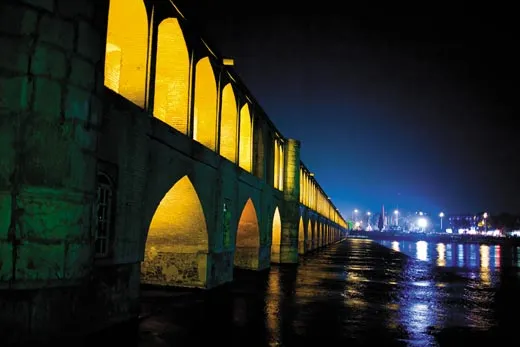
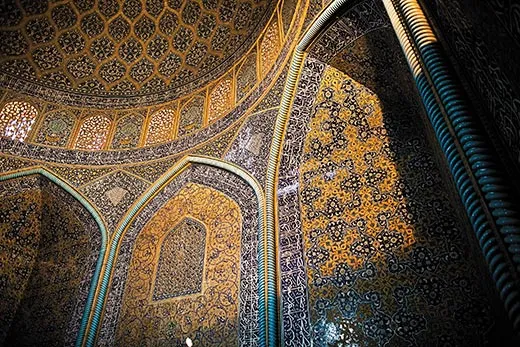
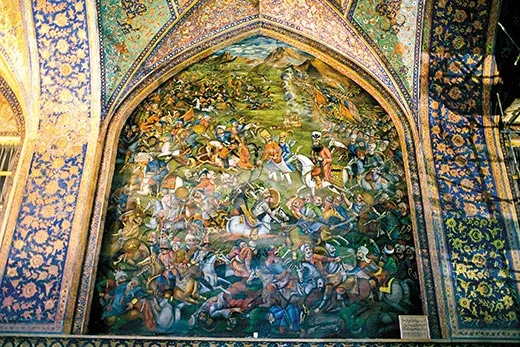
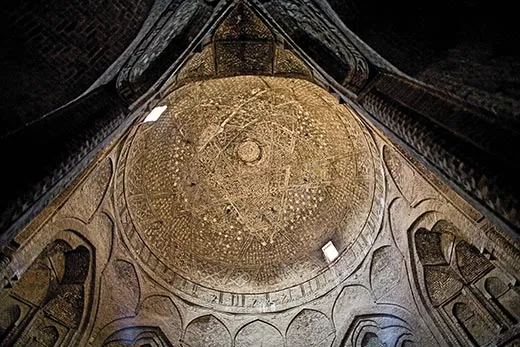
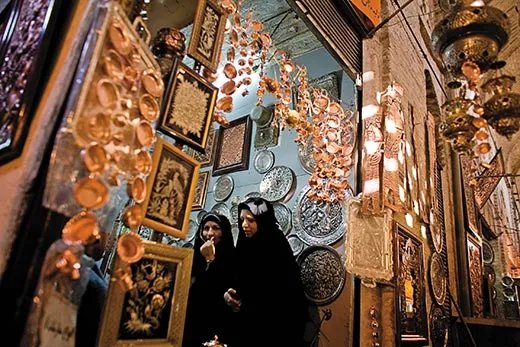
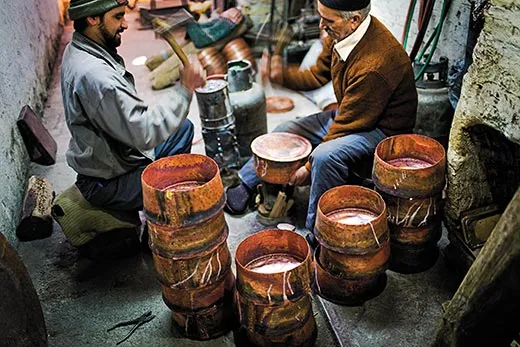
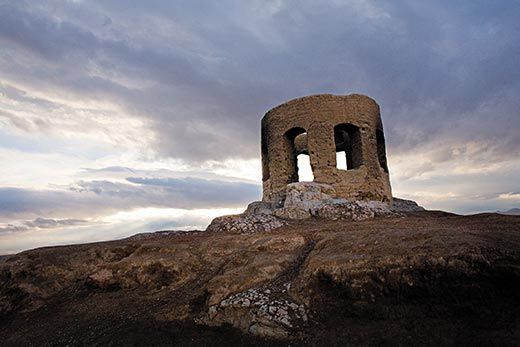
/https://tf-cmsv2-smithsonianmag-media.s3.amazonaws.com/accounts/headshot/andrew2.png)